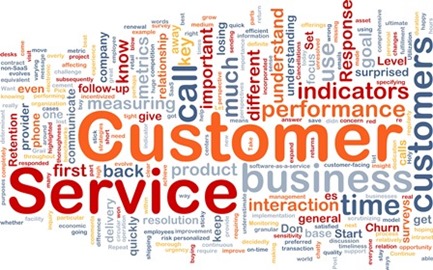What is customer service for?
Posted by Seth Godin
Customer service is difficult, expensive and unpredictable. But it’s a mistake to assume that any particular example is automatically either good or bad. A company might spend almost nothing on customer service but still succeed in reaching its goals.
Customer service succeeds when it accomplishes what the organization sets out to accomplish. Google doesn’t have a phone number, doesn’t want to engage with most users. McDonald’s doesn’t give you a linen napkin. Fedex used to answer the phone on one ring, now it takes 81 seconds for them to answer a call. None of these things are necessarily bad, they’re merely examples of alignment (or non-alignment).
Organizations don’t accidentally run ads, don’t mistakenly double (or halve) the amount of cereal they put in the box. They shouldn’t deliver customer service that doesn’t match their goals either.
Here are some uses of customer service:
To create a significant competitive advantage by engaging with customers in a way that others can’t or won’t. This is what the over-the-top customer service approach of Zappos did. They went from being a commonplace (you can buy shoes from anyone, we’re anyone) to a customer delight company that happens to sell shoes. Rackspace does the same thing with technical support.
To streamline the delivery of inexpensive goods produced in an industrial way: This is the model of most fast food places. Deal with the exceptions quickly and well, and keep the line moving. Part of this mindset is to not make it easy for people to complain, and to treat every complaint in just about the same way. When you get a bag of rancid nuts from Planters, sure, you can visit the website, click a bunch of times, fill in a form and let them know, but they don’t use it as an opportunity to earn your loyalty. "Here, take four coupons, each good for a dollar off one purchase, thanks, we’re done."
To lower expectations and satisfy customers by giving them exactly what you promised, which is not much: This is the model of automated customer service at most big web companies. They’ll do just about anything to avoid an interaction with a human, and they’re clear about this, meaning that they should only end up with customers who are okay with this.
To raise expectations and delight customers by giving them way more than they hoped for, which was a lot: This is a truly difficult promise to maintain (Apple did it with the Genius bar, but they rarely surprise there any more). The secret is to find a focus, a budget and a scale where you can actually deploy talented individuals to keep this promise.
To dance with customers in an act of co-creation: This is part of 37Signals’ secret. From their book to their blog to their clearly stated point of view about platforms and the way they do business, they invite customers to debug with them in an ongoing dialogue about finding a platonic ideal of utility software. They don’t promise perfect, they promise engagement. Over-inform. Speak with respect. Be clear about the invitation. This is a very special sort of customer service, and companies often think they’re doing this but end up cutting corners and are merely plodding along, disappointing those that would have preferred to engage instead.
To diminish negative word of mouth: Many large organizations resort to this, the last step in a sad journey. As soon as a wheel gets squeaky, they grease it. But that’s all they do unless pressed. The problem is that many of your unhappy customers are too busy to get squeaky, they merely go elsewhere, and the ones who you finally do try to help are so pissed off it’s too late.
To build extraordinary trust: This is the initiative taken by an institution to do far more than is expected, at a human level, to earn the privilege of serving again. This is the banker who visits you in the hospital, merely because she heard from another customer that you were ill.
To treat different people differently: One way to reward your best customers is to treat the best of them substantially better than others–the word will spread, others will want to join this group, and those in it will be hesitant to switch to a competitor. But if you make that promise, you need to double down on it substantially, continually improving how you treat your favorites.
To race with competitors to lower customer service costs just a bit more than they will: This is the current progression we see among industrial titans who see customer service as a cost, not a profit center. When you measure this, you can’t help to want to drive the cost down, and you will do it just a bit faster than your competitors, because to do it too fast is to risk condemnation. Alas, in just about every industry that the internet has sucked the profits out of, we see this cost-cutting race to the bottom. It’s not going to end well.
Because you can: This is awfully rare among public companies, but there are many organizations that treat people as they’d like to be treated. Not to grow market share, but because it’s the right thing to do.
So it’s clear that good customers with urgent problems left on hold by Fedex is a mismatch between what they built customer service for and what they’re doing with it. And that a busy startup that doesn’t invest as much time as they could in co-creation communication is not serving the goals of the beta fully. On the other hand, the novelist who doesn’t invest time in answering reader mail is probably doing good customer service, since reserving her best efforts to write another great novel is precisely the promise she has made.
Every single person who makes budget decisions, staffing decisions and customer service decisions must to be clear about which strategy you picked, needs to be able to state, "we’re doing this because it’s congruent with what we say customer service is for."
Obviously, you can mix and match among these options, and find new ones. What we must not do, though, is plan to do one thing but then try to save time or money and do something else, hoping for the results that come from the original plan without actually doing it.
Customer service, like everything an effective organization does, changes people. Announce the change you seek, then invest appropriately, in a system that is likely to actually produce the outcomes you just said you wanted.
Make promises and keep them.






 Posted On July 8 2025
Posted On July 8 2025